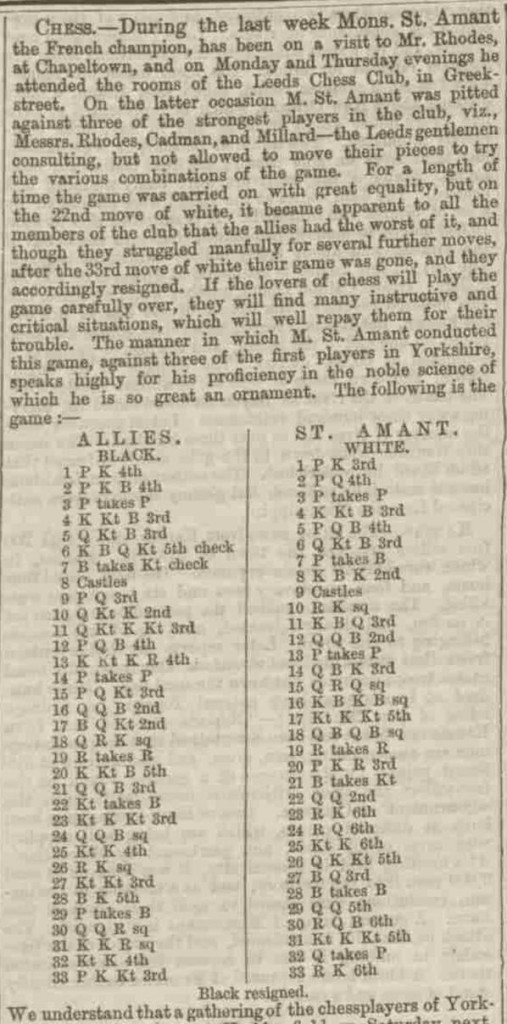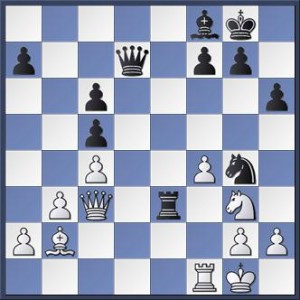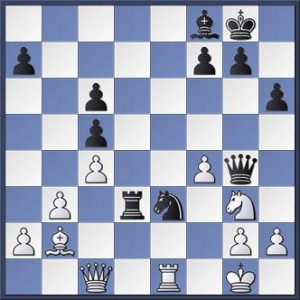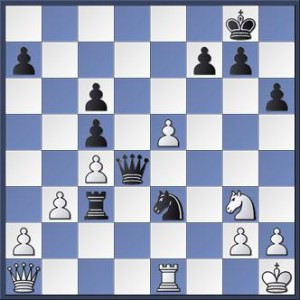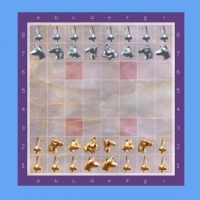Olimpiu G. Urcan
Pierre Charles Fournier de Saint-Amant (1800-1872)
[From a feature in the Illustrated London News, 28 December 1844, page 416; also published in Edward Winter’s C.N. 7610]
A complete and competent biography of Pierre Charles Fournier de Saint-Amant (1800–1872) would be something to truly celebrate. While it has not yet been written, one can imagine the biographer’s (and, eventually, his readers’) exhilaration in unearthing the life and career details of this man who was once a colonial clerk, comedian, wine merchant, army staff officer during the 1848 revolution, governor and consul in various French colonies, and – last but not least – a top chess player and editor who crossed swords with some of the best players of his time. Archival material appears to exist in abundance. For instance, Gallica, the digital archive of the French National Library, lists a number of digitized works involving Saint-Amant, including accounts of many of his journeys. These, along with archival material still un-digitized resting in French archives, would offer plenty of work to any committed researcher. Some work on English sources would also be necessary especially when putting together a more comprehensive collection of Saint-Amant’s chess games (especially since common databases offer only a dozen of his games). It is well known that Saint-Amant spent some periods of time in England where he played quite a number of games. An appeal to 1840s-1850s newspaper columns would produce some interesting results such as the game featured in the present column.
According to page 5 of the Leeds Times of September 6, 1856, Saint-Amant paid a visit to John Rhodes, a leading chess enthusiast in Chapeltown, Leeds earlier that month. According to this newspaper account, on Monday and Thursday (September 1 and 4), Saint-Amant paid a visit to the Leeds Chess Club. It was on that Thursday that he took the black pieces against a team of three players, namely Rhodes, Cadman and Millard, ‘the Leeds gentlemen consulting, but not allowed to move their pieces to try the various combinations of the game.’ The same account gave an accurate description of the game as well as the actual score in which the allied players apparently chose the black pieces yet they opened first. ‘If the lovers of chess will play the game carefully over,’ the newspaper account read, ‘they will find many instructive and critical situations, which will well repay them for their trouble.’ There’s no better introduction to the game we offer below with some annotations of our own:
A section of page 5 of the Leeds Times of September 6, 1856 that gave the Saint-Amant game score.
Rhodes, Cadman, Millard – Saint Amant
Leeds Chess Club, Game in Consultation, 4 September 1856
1 e4 e6 2 f4 d5 3 exd5 exd5 4 Nf3 Nf6 5 Nc3 c5 6 Bb5+ Nc6 7 Bxc6+ bxc6 8 0–0 Be7 9 d3 0–0 10 Ne2 Re8 11 Ng3 Bd6 12 c4 Qc7 13 Nh4 dxc4 14 dxc4 Be6 15 b3 Rad8 16 Qc2 Bf8 17 Bb2 Ng4 18 Rae1 Bc8
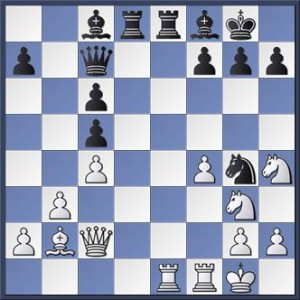
There is something aesthetic about Saint Amant’s developing and un-developing of his bishops.
19 Rxe8 Rxe8 20 Nhf5 h6
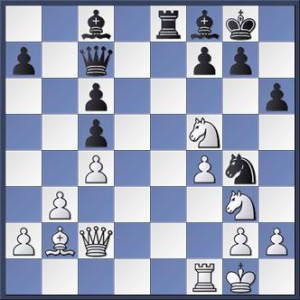
21 Qc3
White might have tried 21 Qd1 with at least a draw after 21…Ne3 22 Qe2 Nxf1 23 Qxe8 Nxg3 24 Bxg7 Nxf5 25 Qxf8+ Kh7 26 Be5 Qd7 27 h3.
21…Bxf5 22 Nxf5 Qd7 23 Ng3
Evidently 23 Nxg7 doesn’t work because of 23…Re3 24 Qc1 Bxg7 25 Bxg7 Kxg7 26 h3 Qd4. Best was probably 23 Qc2 Qe6 24 h3 Ne3 25 Nxe3 Qxe3+ 26 Qf2 with balanced play.
23…Re3!
While forceful, this is not yet decisive.
24 Qc1 Rd3 25 Ne4
Black maintains the pressure after 25 Nh1!? Be7 26 Nf2 Nxf2 27 Kxf2 Bh4+ 28 g3 (28 Kg1 Qg4) 28…Qg4 29 Ke1 Qe6+ 30 Kf2 Bxg3+ 31 hxg3 Qe4 32 Qe1 Rf3+ 33 Kg1 Re3 34 Qf2 Re2.
25…Ne3 26 Re1?
26 Nf2! was best: 26…Rd2 (Black gets nothing after 26…Nxf1 27 Nxd3 Qxd3 28 Qxf1 Qe3+ 29 Qf2 Qe4 30 Qf1) 27 Re1 Rc2 28 Qxe3 Rxb2 29 Rd1 Qe7 30 Qxe7 Bxe7 31 Ng4 Rxa2 32 Ne5 and White is no worse in the endgame.
26…Qg4! 27 Ng3
Giving up the queen with 27 Rxe3 was an unpleasant option: 27…Rd1+ 28 Re1 Rxc1 29 Bxc1 Qd7 30 Ng3 Qd3 31 Be3 and Black is better.
27…Bd6!
Beautifully bringing into play the last piece. The White players are lost. 27…Qxf4? is not good because of the simple 28 Nf1! and Black has no more than a draw after 28…Nxg2 29 Kxg2 Qf3+ 30 Kg1 Qg4+ 31 Ng3 Rxg3+ 32 hxg3 Qxg3+.
28 Be5 Bxe5 29 fxe5 Qd4 30 Qa1 Rc3!
Saint Amant’s domination of the dark squares is impressive.
31 Kh1
31…Ng4
Tempted by smothered mate but there was nothing wrong with a simple win such as 31…Nc2! 32 Ne2 Nxa1 33 Nxd4 cxd4 34 Rxa1 d3.
32 Ne4 Qxe5
32…Rc2! is also very strong.
33 g3
After 33 Ng3 Black still wins with 33…Qd4 34 h3 Rxg3 35 hxg4 Kf8.
33…Re3! and White resigned.
© 2012 Olimpiu G. Urcan



